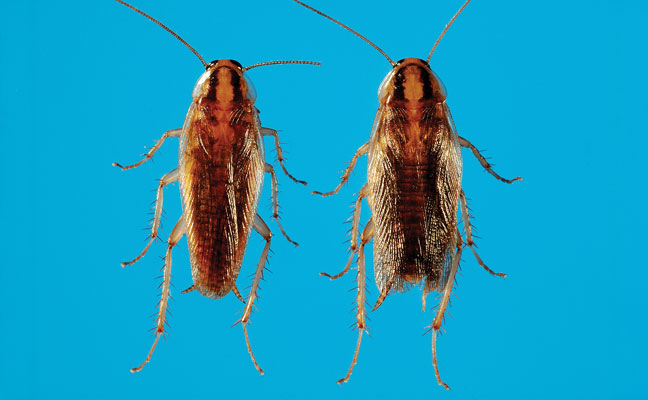
Some invasive species, like the spotted lanternfly (Lycorma delicatula, or SLF) from China, are relatively new to the U.S. Others, like the Asian needle ant (Brachyponera chinensis), have been here for decades but have increased their distribution reach through factors like more favorable weather conditions, “hitchhiking” in furniture or other shipments, or even being more accurately identified from a native species.
Asian cockroaches (Periplaneta japonica) fall into that last category, notes Holly Sanefski, business manager for Perimetek Pest Management Corp., East Syracuse, N.Y. It’s important to note the differences between them and the more commonly encountered German cockroach (Blattella germanica).

“Asian cockroaches can fly, are attracted to light, and are cold-tolerant — all aspects that set them apart from German cockroaches. Surprisingly, they can even survive northeastern winters outdoors,” she says.
Some invasive species appear in the U.S. from strange beginnings. For example, Gambian giant pouched rats (Cricetomys gambianus), which are mostly confined to Florida and are more of an agricultural pest than a structural one (sometimes popping into homes, though, and frightening occupants with their size), are thought to have begun as imported pets that escaped.
There’s also the stranger-than-fiction way the first invasive species to the U.S., house sparrows (Passer domesticus), arrived: Sometime in the 1850s, Nicholas Pike, director of New York’s Brooklyn Institute, paid $200 to import eight of these birds from England. The prevailing theory is that Pike thought the sparrows would biologically control the cankerworms (Geometridae) plaguing city trees, but unfortunately, the birds eat more seeds than insects.
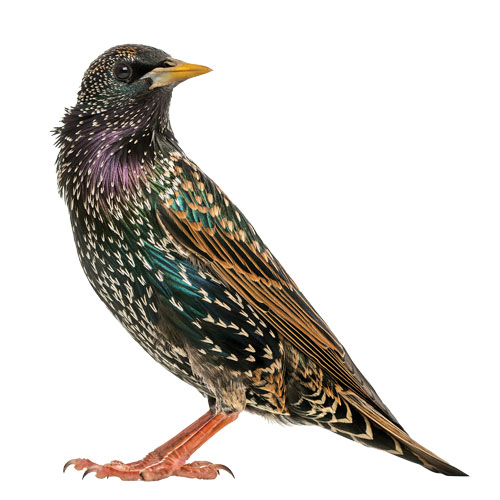
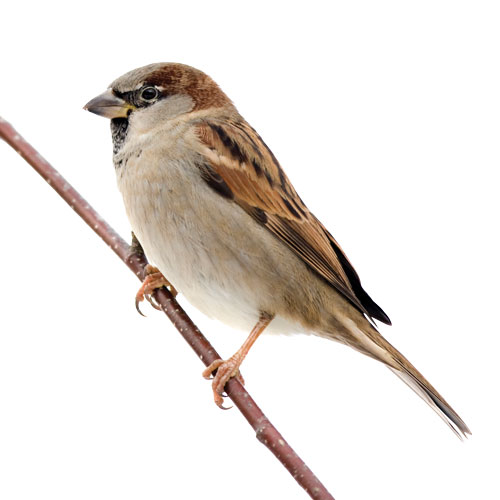

Not to be outdone, in 1890 Eugene Schieffelin imported 60 European starlings (Sturnus vulgaris) into New York City’s Central Park. Legend has it he was on a quest to bring over all of the birds mentioned in the works of William Shakespeare. On the other hand, he had helped sponsor Pike’s sparrow project four decades earlier. He also was heavily involved in the American Acclimatization Society, whose 1871 charter stated a mission of introducing “such foreign varieties of the animal and vegetable kingdom as may be useful or interesting.”
In 1900, Congress passed the Lacey Act before the country was purposely inundated with more non-native wildlife, fish and plants. One of its many objectives is to regulate the introduction of wild birds and mammals in places they typically do not inhabit.
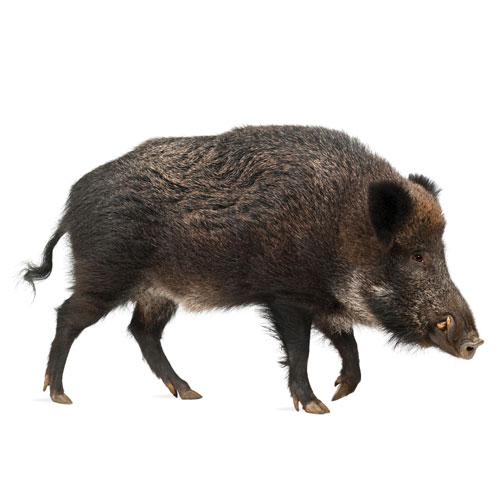
Vertebrate pests
Tony Swilling points to invasive bird species like sparrows and pigeons. “They seem to be an issue from time to time getting into buildings,” adds Swilling, a pest management professional (PMP) for George Washington University in Washington, D.C.

Nisus Northeast Regional Manager George Williams, ACE, PHE, notes wild boars (Sus scrofa) have been an invasive pest in the Americas since they were brought over as a food source in the 1500s. Also referred to as Eurasian boars or razorbacks (as any loyal University of Arkansas fan knows), the U.S. Department of Agriculture reports more than 6 million of these pests bring destruction and native species competition to at least 35 states.
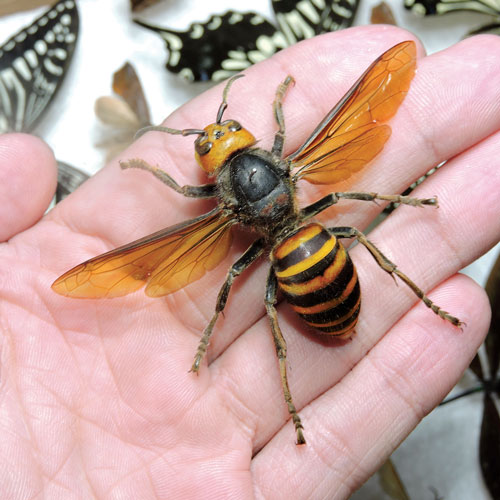
In the limelight
Several invasive species have received extensive media coverage, such as the proactive eradication efforts of northern giant hornets (Vespa mandarinia), native to Asia, in Washington state between 2019 and 2024. Native to East Asia, the Joro spider (Trichonephila clavata) easily makes headlines in every southeastern U.S. town to which it spreads.
“They are striking in appearance, with distinctive bright yellow, blue and red markings on their abdomens,” notes Desiree Straubinger, BCE, president of industry fraternity Pi Chi Omega, a technical service representative of BASF and a member of PMP’s Editorial Advisory Board. “Female Joro spiders can measure up to 3 inches in length, making them one of the larger spider species. Males are significantly smaller and less colorful.”
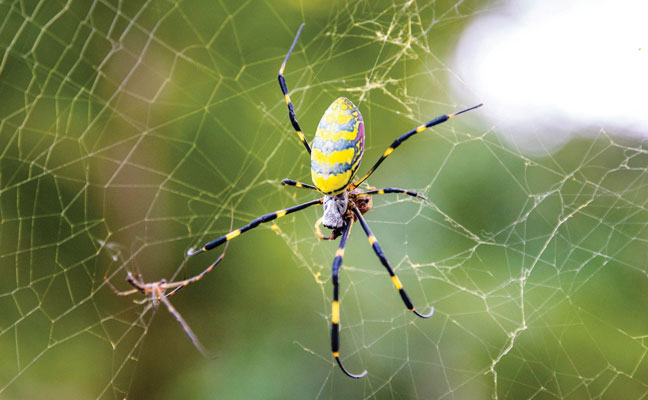

Andrew Taylor, BCE, owner of Grace Valley Pest Control in Dahlonega, Ga., is very familiar with the spider and its habitat. He recalls attending a local pest management conference where the speaker encouraged PMPs to leave Joro spiders be, because they neither bite nor pose a health risk to humans.
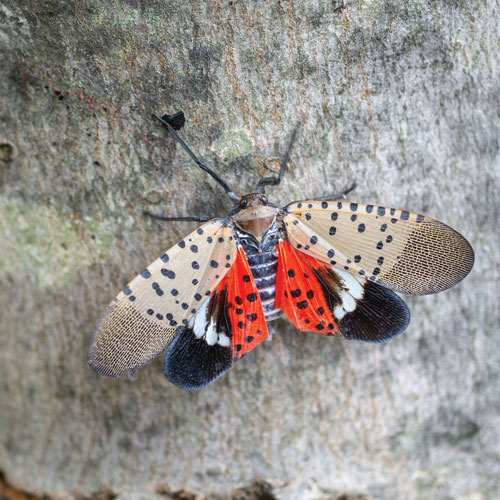
“Sure, they don’t bite people, but it’s another story when you can’t get to a new client’s front door because of all the webbing,” he quips, noting the webs a female can produce often span 10 feet or more and are very strong. “There is always a sense of calm around here leading up to July, thinking that maybe they have gone away for good. Then August comes, and you realize they never left.”

Meanwhile, with SLF, the public is encouraged to kill on sight. Native to Asia, it was first discovered in Pennsylvania in 2014 and has been steadily spreading across the country. The Keystone state has a quarantine in place for this pest, and encourages members of the public to squash it, then report it online — or by phone at 888-4BADFLY.
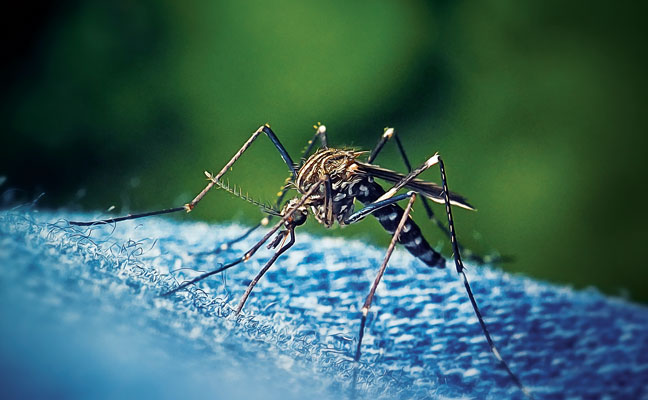

“Several states have SLF quarantine areas in place to help stop the pest’s spread,” reports Dr. Chuck Silcox, product development manager for AMGUARD. “Quarantine zones may be expanded if new infestations are detected. SLF feed on woody and non-woody plants, piercing the phloem tissue of foliage and stems with specialized mouthparts, and sucking the sap. While feeding, they leave behind a sticky, oozing residue called honeydew, which attracts other insects, causes mold growth and inhibits photosynthesis. Because they can appear in large numbers on a single plant, they can directly cause substantial damage to or even kill parts of the host plant while indirectly affecting the health and productivity of nearby plants.”

Jen Sweeney-Ingram, BCE, notes, “Although we now have sightings of spotted lanternfly, they haven’t spread enough yet for us to get regular calls,” and adds that she knows it’s likely just a matter of time before that changes. The technical director of Nashville, Tenn.-based All-American Pest Control says the Top 2 invasive pests in her market are both overwintering species: multicolored Asian lady beetles (Harmonia axyridis) and brown marmorated stink bugs (Halyomorpha halys, or BMSB).
Public health
Laura Krueger, BCE, is a Garden Grove, Calif.-based medical and veterinary entomologist for the Orange County Mosquito and Vector Control District. She points to several invasive mosquito species that also are vectors of disease, such as yellow fever mosquitoes (Aedes aegypti), originating in Africa, and Asian tiger mosquitoes (A. albopictus).
“I don’t think Aedes notoscriptus is expanding outside of California,” Krueger adds, referring to what’s known as the Australian backyard mosquito. “But there are other invasive Aedes species in other parts of the country, like Aedes japonicus, or Asian bush mosquitoes.”

George Wynne, ACE, field training manager for ABC Home and Commercial Services in Wimberley, Texas, teases that there are “a variety of varmints.”
“One of our top invasives in Austin and the Texas Hill Country, though, would be tawny crazy ants,” Wynne adds, referring to Nylanderia fulva — which, interestingly enough, was discovered by Texas PMP Tom Rasberry in 2002 and was initially known as the Rasberry crazy ant.
Prepare for battle

As noted earlier with Asian giant hornets, a proactive campaign against an invasive species can have some success, with public messaging about reporting sightings and in the case of SLF, even creating a dance about how to stomp on sight (see news.vt.edu/articles/2023/10/cals-stompthespot.html, put together by a group of Virginia Tech students who are committed to eliminating the pest).
Some species, like the BMSB, are barely worth the trouble of treating for since their lifespans are short. In many cases, exclusion and sanitation can go a long way toward prevention and control.
For others, of course, like South America’s red imported fire ant (Solenopsis invicta, or RIFA), the black imported fire ant (S. richteri, or BIFA) and the emerging hybrid of the two (creatively, S. invicta x richteri), several professional insecticides are labeled for such infestations. This is especially important when the invasive pests are numerous — RIFA colonies can have up to 500,000 workers — or threatening public health, like these ants do with their potentially deadly sting.
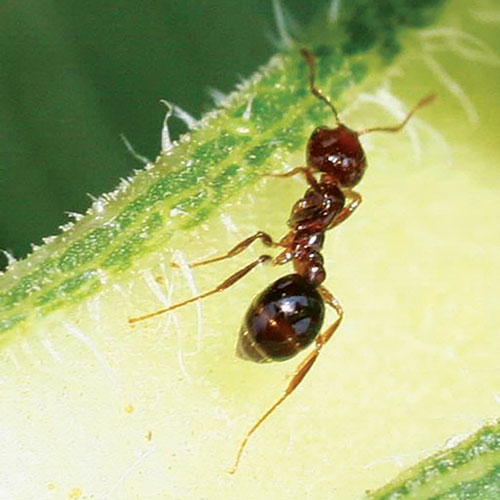
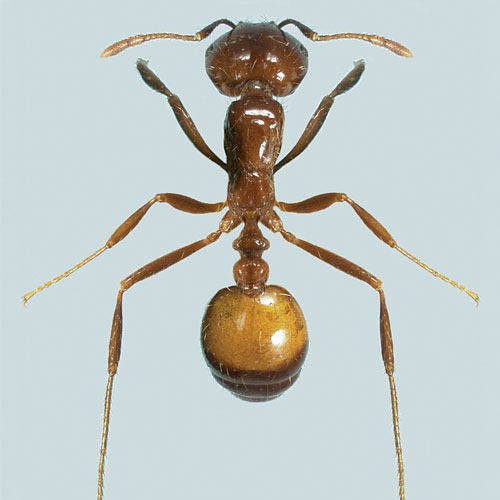
Unfortunately, there is still a category of invasive species for which PMPs are left scratching their heads. James Miller, ACE, global director of PCO sales for Trécé Inc. and president-elect of Pi Chi Omega, says the Australian dried fruit beetle (Carpophilus truncatus) falls directly into that group.
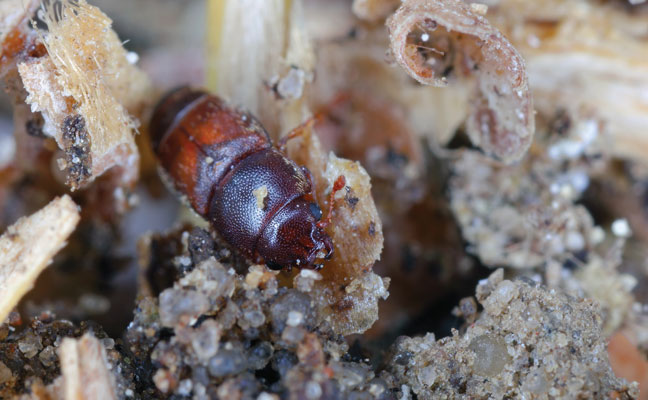

“It’s a very concerning invasive pest, affecting nut growing and processing facilities across California,” Miller explains, adding that the species, also known as the carpophilus beetle, was first detected in the Golden State in 2023. “The USDA cannot find breathing entry holes in their eggs, so fumigation kill steps are not complete. They can reproduce in stored nuts and food facilities as well. They’re tough little buggers! And yet, as it stands, there isn’t a marketable monitoring system for this species.”
Gooch can be reached at hgooch@northcoastmedia.net or 330-321-9754.
Leave A Comment